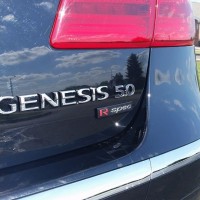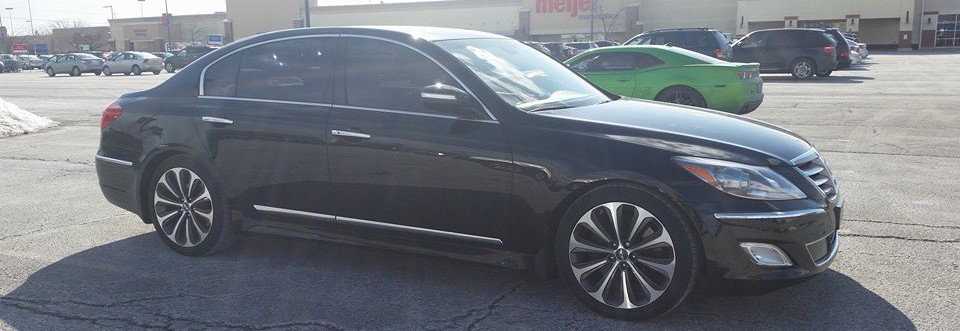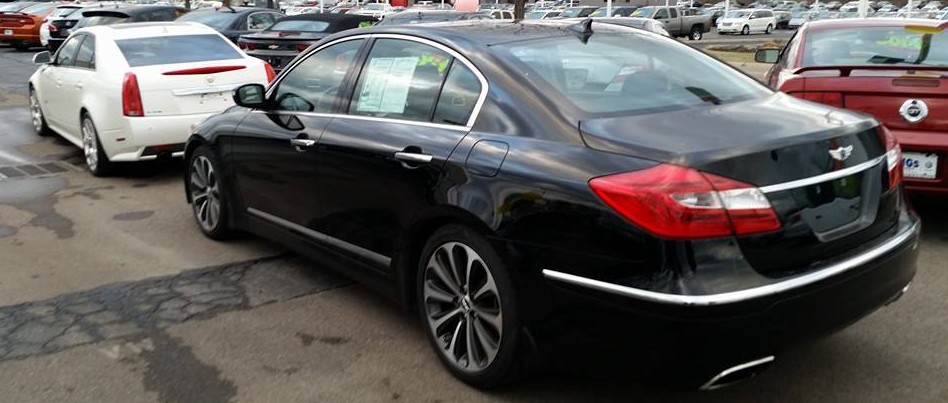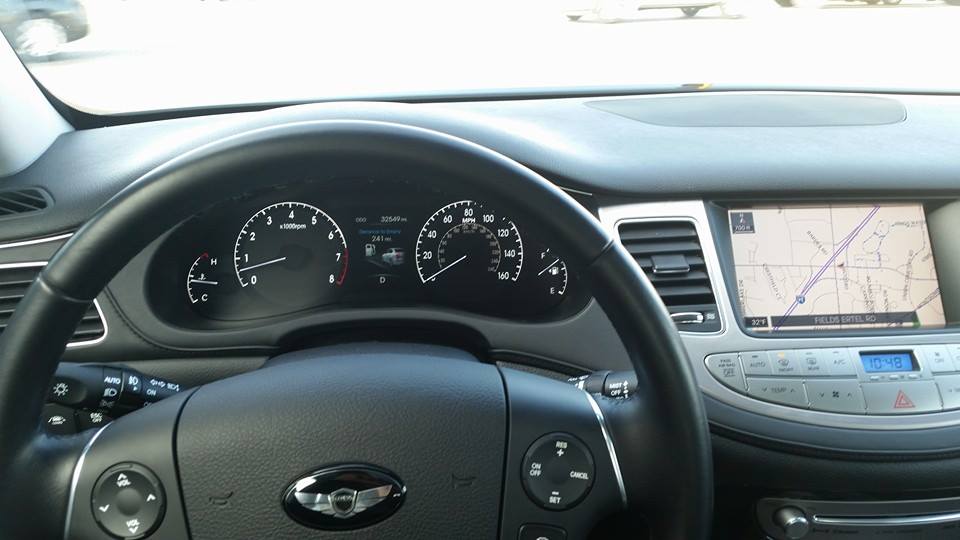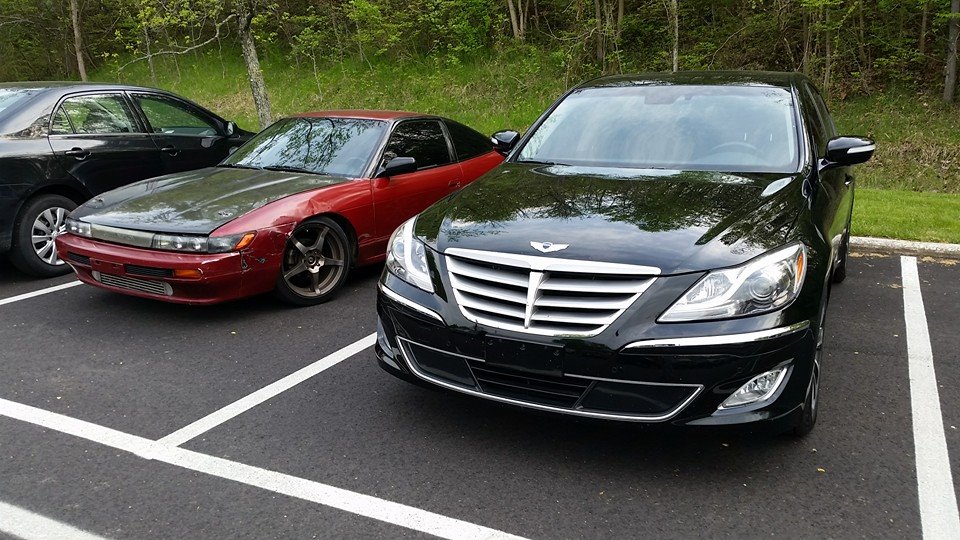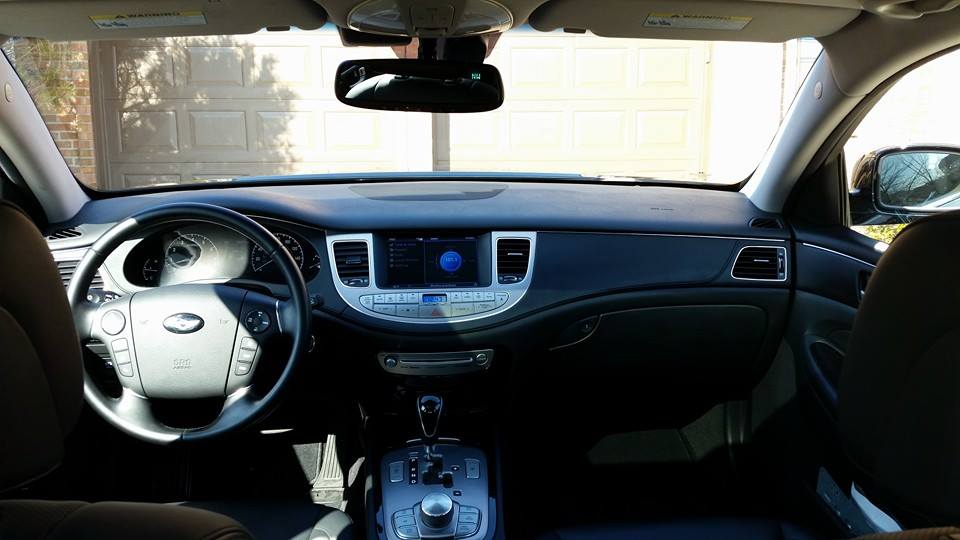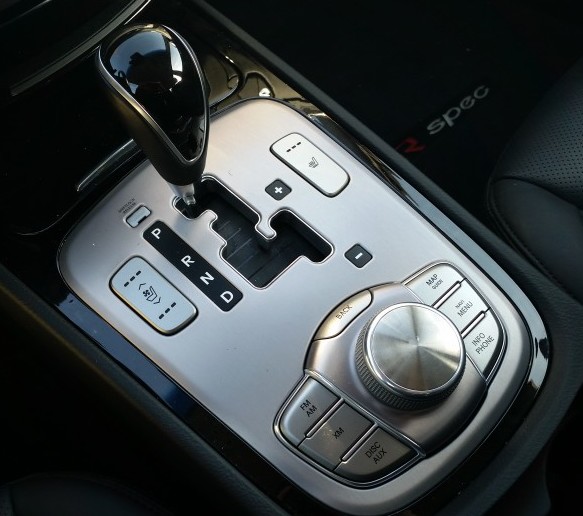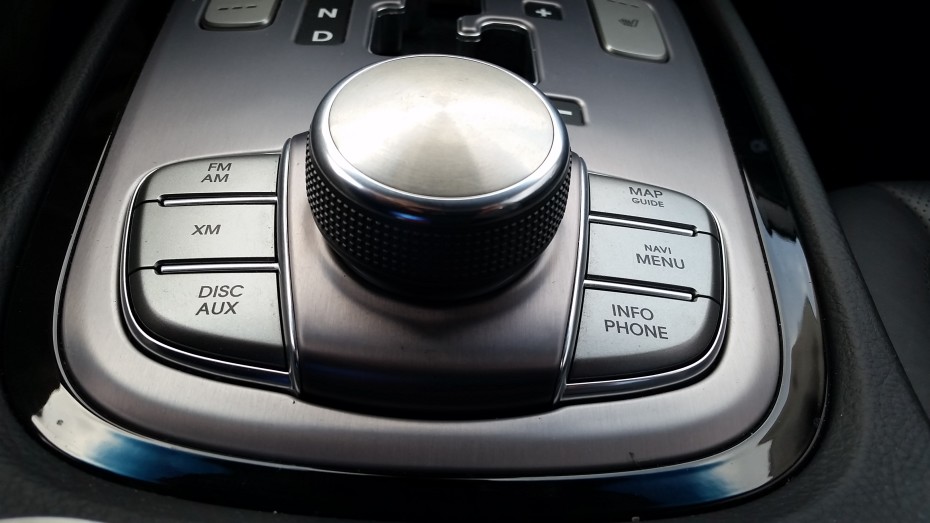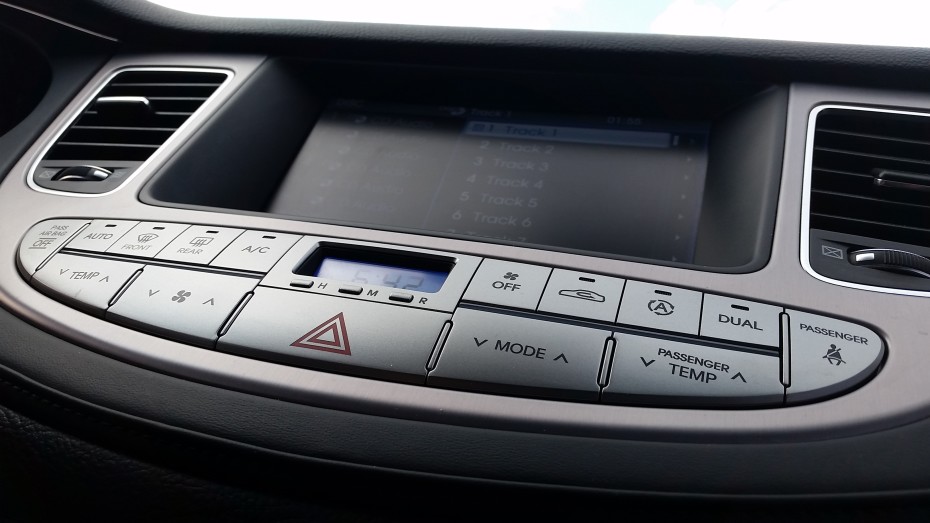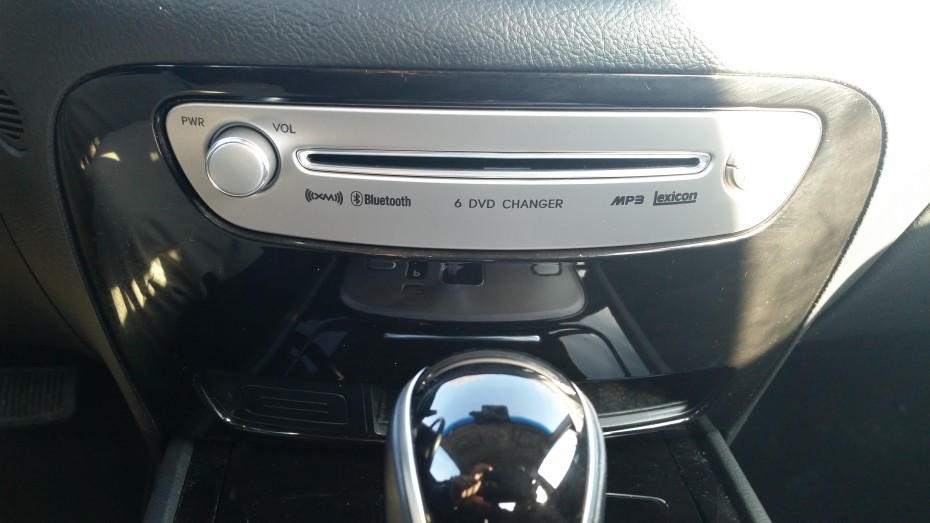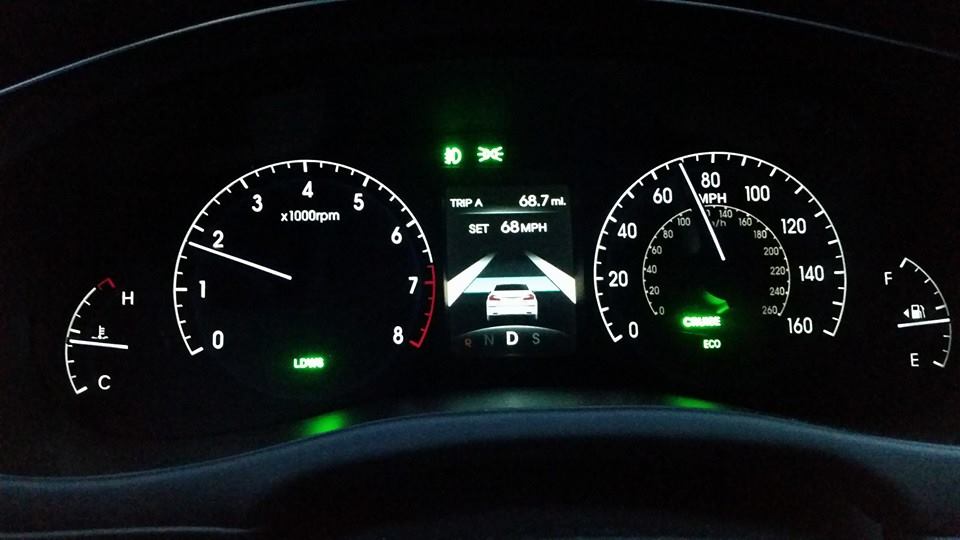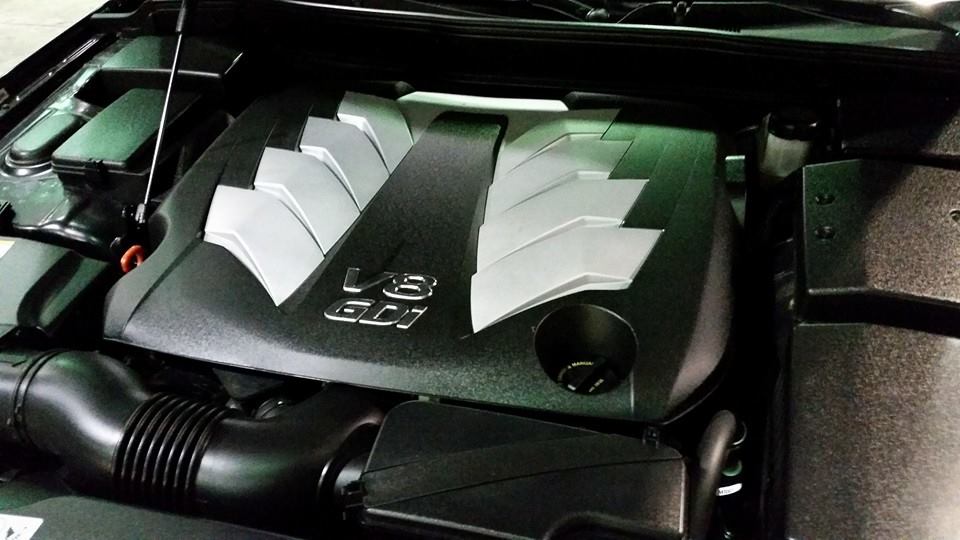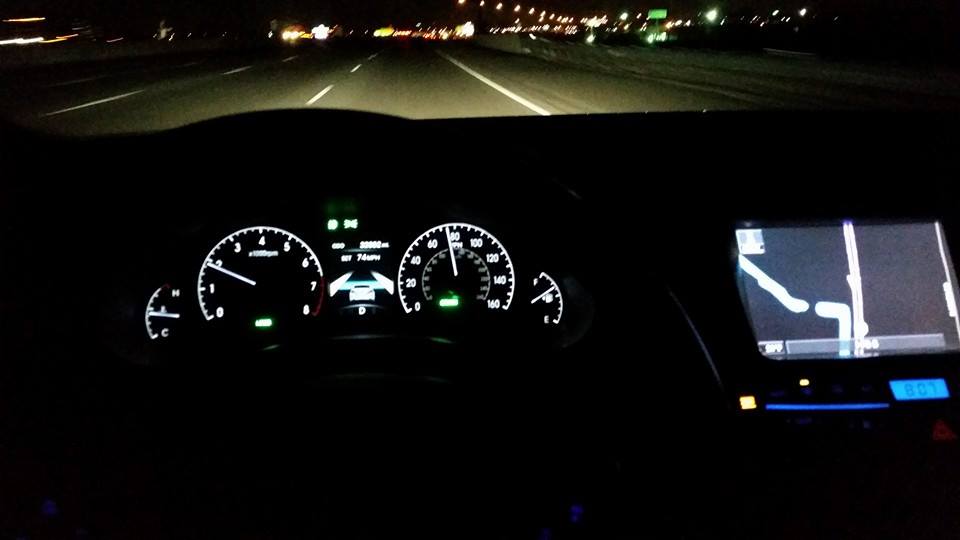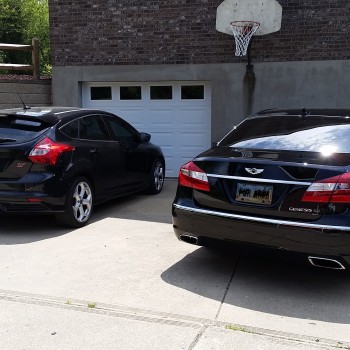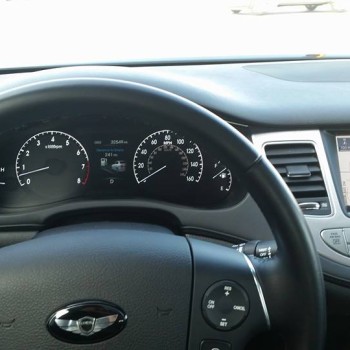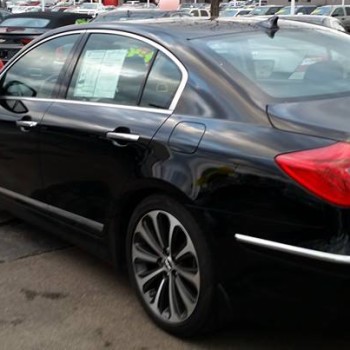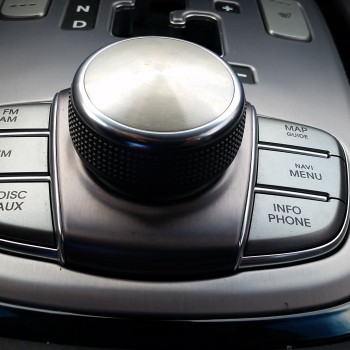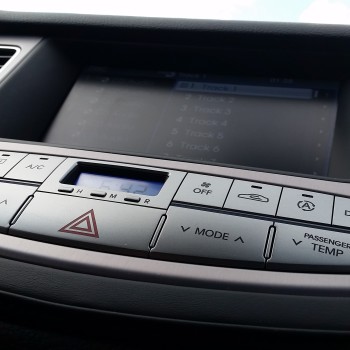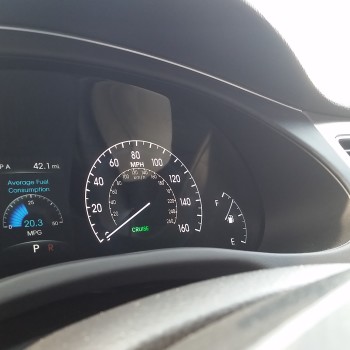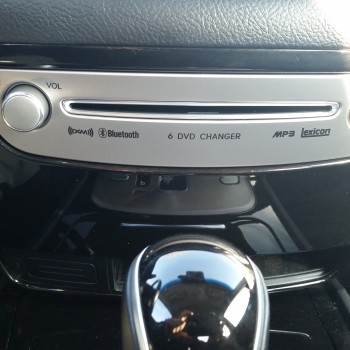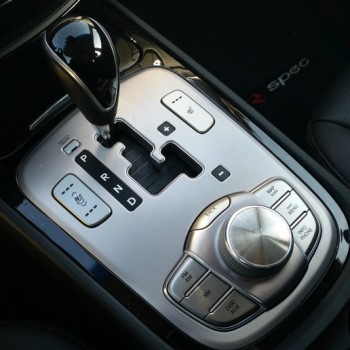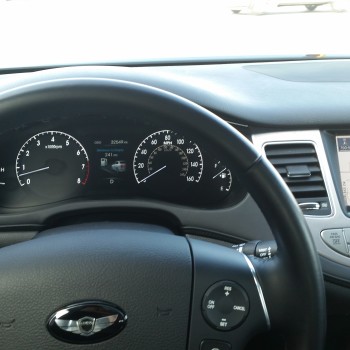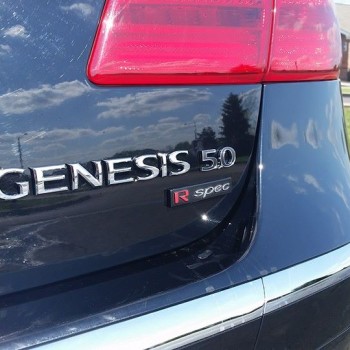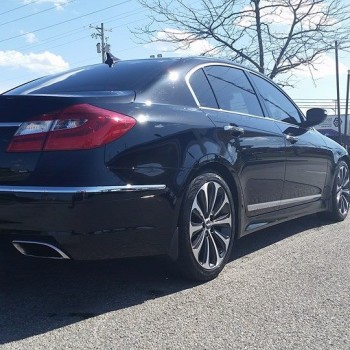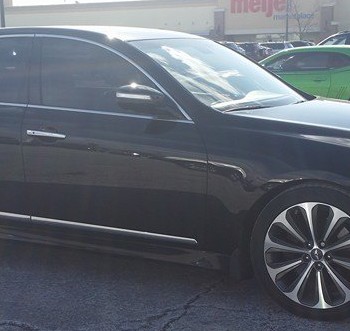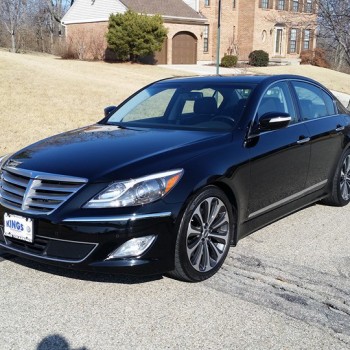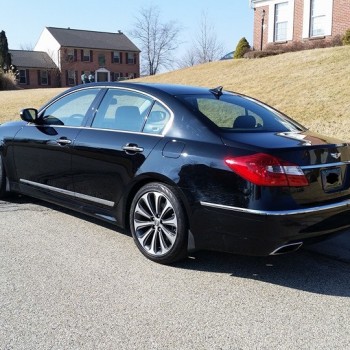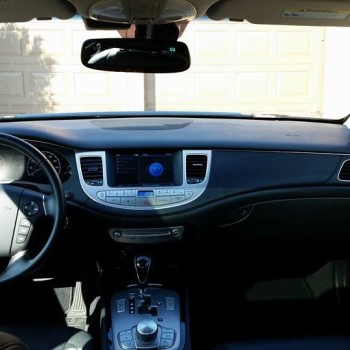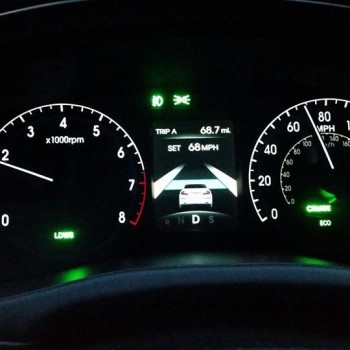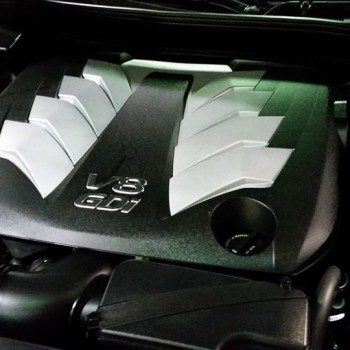DM Review: 2012 Hyundai Genesis 5.0 R-Spec
The Driver Mod Review: Episode One
Written: 14 February 2015 Author: Bryan Williams
Abstract:
Luxury barges have always been an underlying piece of my automotive desire. Sure, wild sports cars, and purist machines will never fade from my psyche, but there is a particular poise wrapped within a high-performance luxury car that seals the deal. Life has been a continually evolving process for me, and though my love for cars has never abated, the income required to own truly nice vehicles was the number one limiting factor keeping me out of this automotive category.
The same can be said for vehicle manufacturers, as luxury cars require significant investments in engineering and development in order to be taken seriously in the market. Mercedes-Benz, BMW, and Audi had their rankings in this arena for the better part of one century, but the newcomers from Toyota and their Lexus division proved that with significant ambition and determination, even the “underdogs” can push through the paradigm to scare the bigger children on the block. Sure, Honda and Nissan have played their hands with Acura and Infiniti, but those brands seem to lack coherent goals and design capstones to truly push them forward. To me, and many others, they are considered to be “secondary” luxury brands, often opting to simply rebrand their economy cars with some softer leather seats and fancy headlights before calling it a day. I can cut Nissan/Infiniti some slack here, where they have largely focused on platforms and drivetrains entirely different from their Nissan counterparts, but not Honda. Now in their darkest days, I find it sad that a loaded Honda Accord represents a much better luxury value than any of their Accord-based “luxury” vehicles (this being said without ranting about their hideousness).
Sometimes, the risk taken to expand into the luxury arena doesn’t work out as planned, yet and still, the newest player is not from Japan, but from South Korea. Yeah, they’ve tried a few lackluster attempts, with the old XG300/350, first generation Azera, and touted up old Sonatas, but the Genesis represented a new leap for the company. Out of nowhere, they had developed their own in-house V8 dubbed the “Tau” engine (a personal favorite name for me), which they installed inside of a new in-house sedan with rear-wheel-drive.
My mind was blown. I figured, that despite all they had done within one decade of advancement (has anyone seen a late 90s Elantra?), it would still be a junk heap and the brunt of everyone’s automotive jokes, but that wasn’t the case. Soon, I discovered that everyone would be proven wrong. When they were released in 2008, they were met with widespread acclaim. Being a huge fan of automotive editorials, I signed on to read every review. To my surprise, the quality was top-notch, the overall refinement was equal, and the value point (which Hyundai had always sold itself on) was undeniable. It won the 2009 North American Car of the Year award, and even the pretentious assholes at Consumer Reports ranked it as a “Top Rated Upscale Sedan” in the same year. This only covers two out of the many allocates given to the car, but the reception was overwhelmingly positive.
So it was an overall win, though the Genesis wasn’t without flaws.
Interestingly, though Hyundai had spent $533 million dollars to develop the car, it has—to this day—been steadfastly resistant to create an actual luxury brand. While it may not have been too much of a problem in its home market, in the United States, image caches are nearly as valuable as the car itself, and telling your friends that you drove a $50,000 Hyundai would queue quizzical stares—at least until you showed them the car, or let them drive it. Perhaps it was an element designed to attack Hyundai’s image qualities on two fronts, both in capability and in quality—so if that was really the case, it has largely worked. I honestly figured that they wouldn’t be able to sell these things, but I was wrong. There were apparently thousands of people who thought they represented a great value, and when the dealerships presented the option of getting the italicized ‘H’ replaced with the Genesis wing emblem, it made the proposition even more attractive. Car and Driver even tested one and piled 100,000 miles on it as a quality test—and it didn’t burn to the ground. The doors never fell off. The engine never threw its innards through the block.
Everyone was shocked.
Then, an onrush of enthusiasts like me took over the onslaught. Though it was marketed as a “luxury sports sedan,” many chided the car for not living up to the “sport” side of the offer, with its cushy and floaty suspension and lifeless steering. What made for a wonderful highway ride, did little justice on a curvy road. It was a clear shot across the bow of the Lexus frigate, and obviously not meant to scare anyone at BMW. Not a bad thing, mind you—since 95% of drivers never exceed the speed limit, especially on a curvy road—but still somewhat annoying for the 5% that considered the car’s value, yet wanted some performance to back it.
Hyundai figured 375hp 4.6 liter V8 had more than enough power for sporting intentions, but apparently the complaints of floatiness didn’t fall on deaf ears, as their response came in 2011 with the R-Spec. Marketed as a 2012 model, the R-Spec bowed in as a loaded top-notch Genesis with some suspension tuning, visual updates, ‘R-Spec’ badges, bigger wheels, and—most importantly, a bigger V8 that was good for 429bhp. So, I patiently awaited the reviews, and I read about how the fixes largely cleaned up the car’s faults, but it was no track star. Many felt that ‘R-Spec’ badging may have been too overzealous, as a simple sport package would’ve been more viable in such a situation.
Still, at $49,500 on the market, it represented an appalling value when cross shopping luxury sedans with comparable powertrains, layouts, and space. Hyundai shrugged its shoulders and kept selling cars. I quite frankly didn’t blame them, though I still largely dismissed the car as being a ‘good try’ instead of a true success.
Then, I did the unthinkable.
I bought one.
Overview:
Okay, so it isn’t new, but it’s pretty close.
It was a one-owner, no accidents vehicle, meticulously serviced and maintained. My friend was actually looking at a Cadillac CTS-V (out of my price range) when I happened to notice the Hyundai parked next to it. Curiously, I drove the car, and I fell in love with it. As I covered before, luxury barges had chiseled a soft spot into my automotive soul, but I refused to contend with one unless it had enough to keep me satisfied as an only car. At the time, I had two vehicles, my beloved ‘racecar’ Pontiac GTO 5.7, and my ‘daily driver’ Mazda 6 V6. I stood firmly on the grounds of keeping both cars unless I could find a vehicle capable of legitimately replacing both.
And there it was, sitting in front of me, its Black Noir Pearl paint glistening in the winter sunset on a Sunday evening. I drove it and liked the sweet, but admittedly short experience, and sent a picture of the car to my wife. She actually liked it. Then I sat at home and figured out that I could actually afford the car, as its monthly payments wound up being equivalent to that of my two cars combined. Here, I found myself stuck in the purgatory of cardom—the point where both my primary and secondary vehicles were fighting old age, and losing, thus placing lasting holes into my pockets. I wasn’t rich. I was a dude simply trying to work his way through college while making his own living. I loved my racecar GTO so much that I wrote a series of books in which it starred as a main plot device—but I didn’t have the means and willpower to keep bolting replacement parts to the damn thing. My Mazda was a decent ride itself, but possessed the performance of a late model 4-cylinder Accord, with the fuel economy of the decade-old V6 that it was.
Negotiations ensued.
A ricer stopped me and offered to buy my car, ultimately resulting in hours of anxiety, lost sleep, and a teary-eyed departure from the dealership, where I, wait for it—drove home (well, actually to a terribly sad funeral) in a shiny black Hyundai.
It felt like I had sold my soul. There, in the mirror, was the last glimpse of my pride and joy, my GTO, the car that I promised to never sell. Most people wouldn’t understand such heartache, but it was definitely a trying moment for me. It was time to face the facts that things weren’t going to get any cheaper, and with repair bills piling up and my lust for expensive modifications continuously floundering my project budget, I reached a point where change was necessary.
I needed a car that could do everything that I wanted. It needed to be smooth. It needed to look good. It needed to be as powerful, or more powerful than the GTO, yet simultaneously offer similar fuel economy to the Mazda. In theory, such a vehicle would incur higher basic operating costs, but at the same time, I’d be less inclined to touch it, so I could focus on other things like saving for a house and travelling.
Options were slim, but the surprise came from Hyundai Motor Company.
Who would’ve guessed?
Design:
I’m a huge fan of understated cars, mostly because they tend to be more quietly appealing to the eyes and less offensive in most cases. Judging by my history of rather unassuming vehicles, I’d say that this has been a running trend since the beginning of time. I’ve always liked tasteful cars, ‘Q-ships’ as they call them, or ‘sleepers’ in ricer speak.
In regards to the Hyundai, the trend definitely continues. Looking at the car arouses no clear emotion of wondrous adoration, but at the same time, you don’t hate it. It’s not the sharpest looking car on the road, but then again, it’s pleasantly handsome. Usually, Hyundai has a bad habit of ‘overstyling’ their cars (cough, cough, Veloster and Genesis Coupe), but this one seems to be one of their most coherent designs. It looks like an actual luxury car and less of an imitation of such claims, with its cleanly applied chrome accents (I’m usually not a fan of chrome) that line the bottom of the doors, and accentuate the trunk and rear bumper—though the later parts represent a broken line of continuity with each other. The upgraded LED tail lamps are nothing too special, but they do the job, all while looking better than the previous units. The headlamps acquired their own, quite neat looking, blue LED wave construct spanning the width of the lens—giving it an appearance akin to blowing in the wind.
A slightly different front bumper and more aggressive side skirts further compliment the package, and though the majority of these items were included on all Genesis models in the 2012 model year, I feel as if the enhancements look best with the R-Spec’s 19 inch wheels. Lesser models do with 17 and 18 inch versions that look rather out of place with the rest of the body, not too much unlike the situation with Lexus’ own LS series. Interestingly, there is no front badge on the car, as if Hyundai wanted people to look and beg for an answer. On a recent trip to Chicago, we proved this theory when an errant BMW X5 driver went out of his way to repeatedly check for a hood badge. Reverse psychology, anyone? The trunk contends with a wing emblem, and no, it looks nothing like a Chrysler equivalent, though many are quick to make the comparison (many manufacturers use similar badges: Mini, Bentley, Chrysler, etc.). The exhaust outlets are integrated into the bumper with their own chrome rings.
I’m not sure how I feel about them.
Overall, it brings the impression of expensive modesty—something that I don’t find to be a bad quality.
The interior follows the same approach, with soft, lush smelling leather abound at your fingertips. Stylistically, it’s rather bland, but again tasteful all at once. Not wanting to overdo it with tacky fake wood (thank god), Hyundai instead gifted the car with a more subtle treatment of blackened plastic panels with glossy overlays. Despite sounding rather cheap, go take a look at the standard wood grain in a Lexus GS350 and tell me that it doesn’t share a resemblance to the fiberboard furniture available for $30 at Walmart. The dashboard is covered in one piece of leather strewn over the expanse, and I quite like it.
The vents feel high quality, and so do their controllers. Aluminum panels pick up the remaining slack of accentuation, surrounding the ubiquitous in-dash infotainment screen, shifter, disc insert, and control console. Only the big panel on the center console brings questionable critiquing, while the rest more than does the job.
One of my friends expressed his distaste for the simplicity of the instrument panel—it is flanked purely by white LEDs—but I digress that it is simple, functional, and of sufficient quality to live up to its promises. In my opinion, basic luxury car buyers tend to want to know basic things like how fast their vehicle is traveling, how fast its engine is spinning, how much gasoline they have left, and whether or not their engine is overheating. They don’t need ricer graphics with animated cartoons running around on LCD screens—but a subtle ‘R-Spec’ badge wouldn’t have been out of place.
Oh well.
Perhaps I have a bad bias considering my relative inexperience with luxury cars, but after coming from a 2006 Mazda, and a 2004 GTO, the inside of this car feels like I’m on another planet. This a huge win in my book, as it easily feels like I’m inside of what was originally a $50,000 vehicle. Though I haven’t spent much time with it, my biggest gripe is the stupid infotainment system. It’s honestly pretty intuitive for first-time users, but I won’t touch the navigation system with a ten-foot pole. Without the screen having touch functionality, I’m forced to use the twirling knob on the control panel, making address entries far more tedious than simply typing them into my phone. Google Maps wins this battle by far, but I sometimes put the GPS map on the screen—because luxury car.
The trunk is huge, which is perfect for my future road trip to Florida with my wife later this year. (Update: I wound up not taking the Genesis on this trip due to the fact that it had been crashed into and the vehicle wasn’t fixed in time)
Dynamics:
Here is where the difficult part of the equation arises. Have they done a good job with buttoning down the cloud-like sensations present in its non-tuned stable mates? Well, in short, and despite you not wanting to hear this—I don’t know. Why is that? Well, it’s largely to do with the current weather conditions among other factors. Lately, in southern Ohio’s late January, we’ve had a good amount of ‘nuisance’ precipitation, requiring hundreds of tons of salt treatment to be dumped onto the roads. The first noticeable thing about the car is that its OEM Continental tires aren’t privy to these conditions, as there seems to be more than adequate body control, yet very little real traction on the road surfaces.
The suspension is largely complaint, but it can get a bit grimy on certain patchy stretches of road that a Lexus or, say, a Bentley might dispose of without undue drama. With this said, the ride it still comfortably pleasant, with long highway stretches and around-town cruises happening with the gleeful gloom of tranquility—a trait that is both awesome and dreadful all at once. It’s part of the underlying magnificence of a true luxury sedan, the hidden factoid that reveals the ability to make your drive as quiet, smooth, and lifeless as possible. Leaving work after a stressful day has never been better, yet corner carving might be reserved to duties for a future racecar. Steering is accurate, though precariously weighted and numb in typical luxury barge fashion. It isn’t at all bad, but at the same time, it isn’t at all good.
Though I do hope that this opinion abates itself once road conditions improve, I will say that 6/10ths driving is excellent, but anything beyond 8/10ths results in a flashing ESC light, evidence of a nagging and overzealous stability control system that cannot be fully disabled, no matter how long the button is held. Sharp steering inputs are met with resolute understeer—and a blinking ESC light. Sharp throttle inputs at speeds lower than 60mph are met with wheel spin, tail-wagging, and you guessed it—a blinking ESC light. Sometimes, the intervention is so severe that it snaps your head with a blatant protest. Annoying. The Continental ContiSport Contact tires appear to be original equipment pieces with about 45% of their life left, making overall judgment purely subjective (Note: these have since been upgraded to Yokohama Advan Sport A/S tires) . Now that we’ve had a share of rather paralyzing winter storms, I’ve determined that this big sedan is largely useless in any major snowfall above two inches without winter tires.
(RECENT UPDATE: The handling of the car improved as the weather warmed up. A heart-pounding romp through Kentucky back roads revealed a car that overall wasn’t too horrible at dancing. The size and mass of the car are blatantly obvious however in anything over 8/10ths, though understeer fails to significantly register until the very upper edge of the limit. I wish that the steering ratio was a bit shorter, but that would make the sedan twitchy on the highway. Body control is still a little flabby at times, but again, this is a luxury sedan, not a BMW M5.)
So, with traction issues precluding any type of low speed acceleration measurements, it is relevant to point out that the V8 is awfully potent at highway speeds—and above. After growing used to the expansive midrange behavior pushrod V8 engines from General Motors exhibit, feeling the Hyundai’s engine pull strongly to the redline was something precariously absent in my old LS1. Either way, the technologically advanced DOHC V8 is absolutely velvety and a wrought joy to redline. It isn’t without recourse, however, as some oddities arise with enough experience. Cars with expansive electronic nannies are a new realm for me as an owner, but something feels a little off at times with this car. It’s as if there is some type of torque management programmed into the engine control logic, sometimes unleashing more power than it does at other times.
The biggest letdown is the eight-speed transmission. Despite having a hogwash ‘adaptive logic’ programmed into its brain, the unit is rather sluggish and dimwitted—especially if caught in ‘dead zones’ of the gearing. During passing situations, it wastes time by outright refusing to select lower gears until the last minute, a point where the car startlingly shoots forward, prompting wheel spin and the blinking ESC light all the while. Manual mode is rather slow, but it at least attempts to rev-match downshifts, though upshift prompts are delayed. It shifts automatically at redline, anyway, so any type of high speed joy riding could still be left to the computer. Unless furious back road rummaging is on the palate, leaving the transmission in ‘D’ is adequate. Sadly, there are no paddle shifters present. Eight gears are too many, might I also add, though a few select companies disagree and are actively preparing 10-speed units. Maybe if it chose gears better, my opinion would be different.
(RECENT UPDATE: In general, my personal experience with the car over the past few months has resulted in a ‘mixed-bag’ opinion on the drivetrain. At times, usually in cold temperatures, the transmission shifts with a jerk that can be clearly felt by a picky driver. It is usually prominent on the 1-2 shift, but still irregular enough to point to a mechanical mishap. Sometimes, downshifts are slurred and abrupt, but the unit never slips. It’s as if a bad calibration was programmed from the factory and has yet to be fully rectified—and the issue was so pronounced that the car was taken to a dealership and reflashed under warranty, largely reducing the frequency of the problem. Subsequent visits resulted in no concrete diagnosis, as the sloppy shifting is so irregular that the car put on its best act when in front of the service technician. The engine is smooth enough for its designation, but there are some slight hiccups that I feel Hyundai needs to address on a car in this class. Perhaps it has with the newest generation, but I have yet to drive one. Full throttle shifts in 1st and 2nd gears never touch the redline for some odd reason, meaning that the engine never makes 429bhp until the shift to 4th gear at 90mph. The torque limiter in 1st gear makes the car feel like it’s running at 3/4 throttle instead of 100%. Annoying.)
Excellent news comes from the braking system, where large 13.6inch diameter front rotors are clamped by a pair of 4-piston upsized rotors. Braking power is more than sufficient despite some muddiness in the first inch or so of pedal travel, and they remain fade free even during some slightly illegal situations where the car was required to slow down from 120mph—or more. An interesting note includes some apparent assistance from the transmission when slowing to stop, as the driver frequently experiences more braking force than requested—though it could be something computer related, for all I know.
Efficiency:
This topic is a mixed bag. With extensive cold start warm ups in Cincinnati’s -4 degree weather, fuel economy averages haven’t necessarily been pretty. Before the barrage of late winter snow was dumped upon us, however, there were three fill ups where the car happily average 19-20mpg in mixed driving. A highway trip to Chicago and back with four souls and their luggage on board resulted in an average 22.8mpg. I expect to see a slightly better result during the two person trip to Florida, though this is heavily dependent on how many STIs or BMW M3s I see on the way down and back. To me, this is something that has to be largely forgiven, as this car is—after all—a large and lavish luxury sedan with a 5.0 liter V8 under the hood.
It’ll never be a Prius, but I will admit that the result seen thus far aren’t bad by any means. It’s a hair better than my old GTO, which itself would struggle to maintain an 18.0mpg average unless I was frugal with the throttle—a very difficult task considering the glorious noises made by its old-fashioned engine. Though Hyundai notes that the engine can run happily enough on 87 octane fuel, I’ve never tortured it enough to actually fill it with regular. It only drinks 93, because it’s a luxury car, and I figure that treating it that way will be beneficial in the long run.
(RECENT UPDATE: As the weather warmed and the long engine warm ups ceased, fuel economy leveled out at 19.7mpg mixed. During back road romps in the hills of NKY, I saw the number drop as low as 12.8. Yikes.)
Conclusion:
To me, the Genesis kind of feels like a mixed bag of delicious treats. It is a car that wholeheartedly gives a stellar effort to coddle and impress, and while the car largely succeeds in this area, there are a few let downs that are hard to get past. Perhaps my gearhead bias has clouded my judgement, but I feel as if the “R-Spec” nomenclature should’ve added more pizzazz to the vehicle than it does. It’s one of my biggest frustrations when it comes to automobiles—to see A-grade engineering and design get spoiled by a few knotty details—but I still like the car overall.
Sure, the transmission is sluggish and dimwitted when it comes to downshifting for passing maneuvers, but the majority of the owners don’t mind that. Would it help the car to give it some more life? Hell yes.
Sure, the engine is never allowed to produce full power until third gear, where it really begins to sing, but the majority of the owners don’t do standing start drag races. Would it help the car to unlock its full potential? Hell yes. Considering that it put down a 13.58 quarter mile with all of the electronic nannies still restricting it, I’d stretch to say that the car could at least do a high 12 second time if it was allowed to.
Sure, the suspension could be a little fancier, but sometimes simplicity reigns. In this case, it’s largely true. There is no overly complex electro-hydraulic or pneumatic system to worry about failing.
The car fulfills its purpose as a luxury grand touring sedan, with plenty of power from a smooth V8, loads of space, a handsome design, and enough curb appeal to pique the interests of bystanders that are curious to know exactly what it is.
Too bad when you respond, you have to casually admit: “It’s a Hyundai.”
They usually respond with: “Oh.”
Bummer. At least you feel rich while driving it.
Vehicle Details:
Categorization
Vehicle Class: Automobile
Style: 4-door saloon
Manufacturer: Hyundai Motor Company
Designation: Genesis
Sub-designation: 5.0 R-Spec
Specifications
Length: 196.3in
Width: 74.4in
Height: 58.3in
Wheelbase: 115.6in
Curb Weight: 4,334lbs
Engine
Type: Continuously Reciprocating Internal Combustion
Layout: V8
Valvetrain: DOHC, Dual-Continuous variable valve timing (D-CVVT)
Displacement: (bore x stroke): 5,038 cc (307.4 cu in) (96.0 mm × 87.0 mm (3.78 in × 3.43 in))
Compression Ratio: 11.5:1
Fuel Delivery: Electronic Gasoline Direct Injection
Horsepower: 429 hp @ 6,400rpm (320 kW)
Torque: 376 ft·lbf @ 5,000rpm (510 N·m)
Transmission
Type: Planetary Gear, multi-clutch
Control: Automatic, Electronic Control
Input: Automatically-locked torque convertor
Gears: 8 forward, 1 reverse
Driven Wheels: Rear
Differential Type: Helical Limited Slip
Gear Ratio(s):
First Gear (:1) : 3.80
Second Gear (:1) : 2.47
Third Gear (:1) : 1.61
Fourth Gear (:1) : 1.18
Fifth Gear (:1) : 1.00
Sixth Gear (:1) : 0.83
Seventh Gear (:1) : 0.65
Eighth Gear (:1) : 0.57
Final Drive Axle (:1) : 3.54
Measured Performance:
Top Speed
150mph (speed governor)
Acceleration
Time to Distance (seconds):
60ft – 2.13
330ft – 5.85
660ft (1/8 mile) – 8.87 @ 82mph
1000ft – 11.41
1320ft (1/4 mile) – 13.58 @ 106mph
Time to Speed (seconds)
30mph – 1.8
40mph – 2.7
50mph – 3.7
60mph – 4.8
70mph – 6.2
80mph – 7.9
90mph - 9.7
100mph – 11.8
/drivermod episode 1

